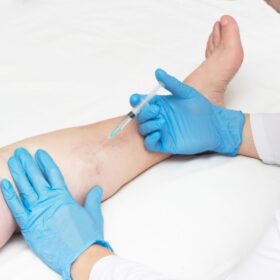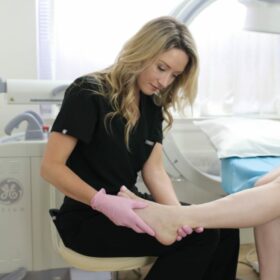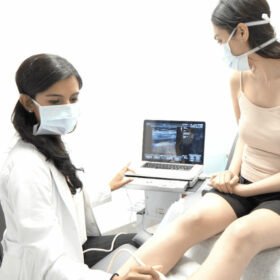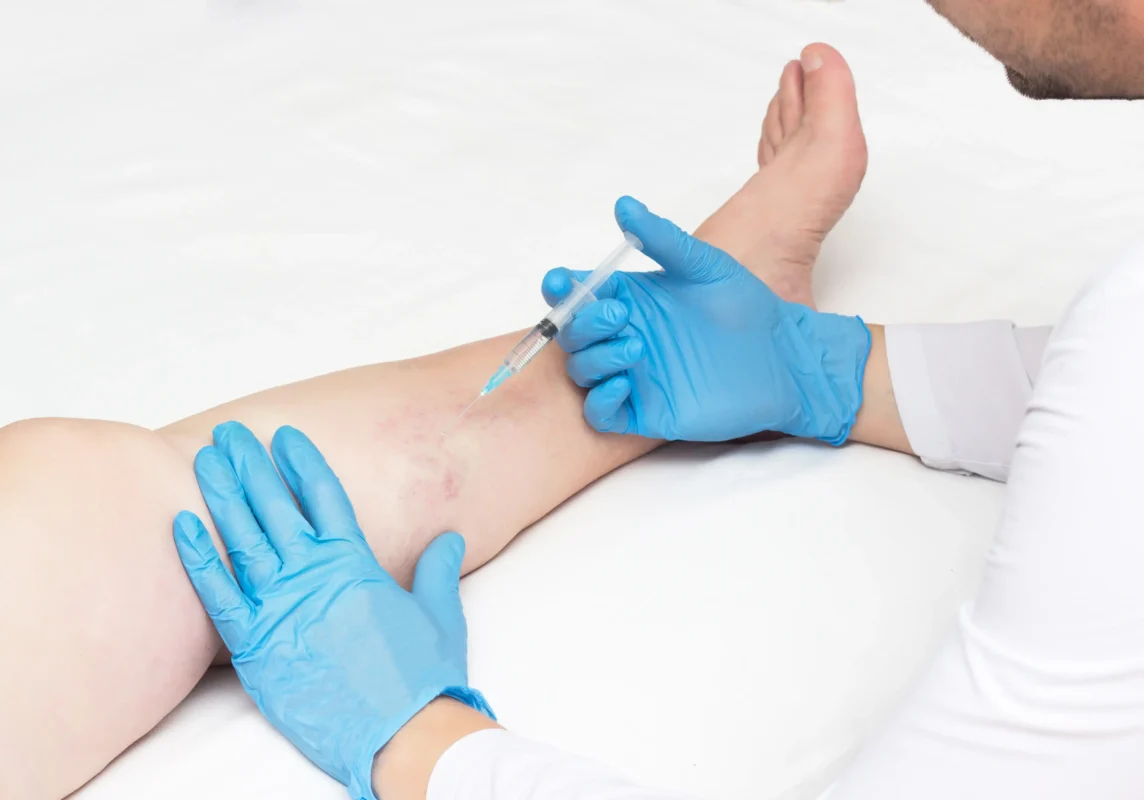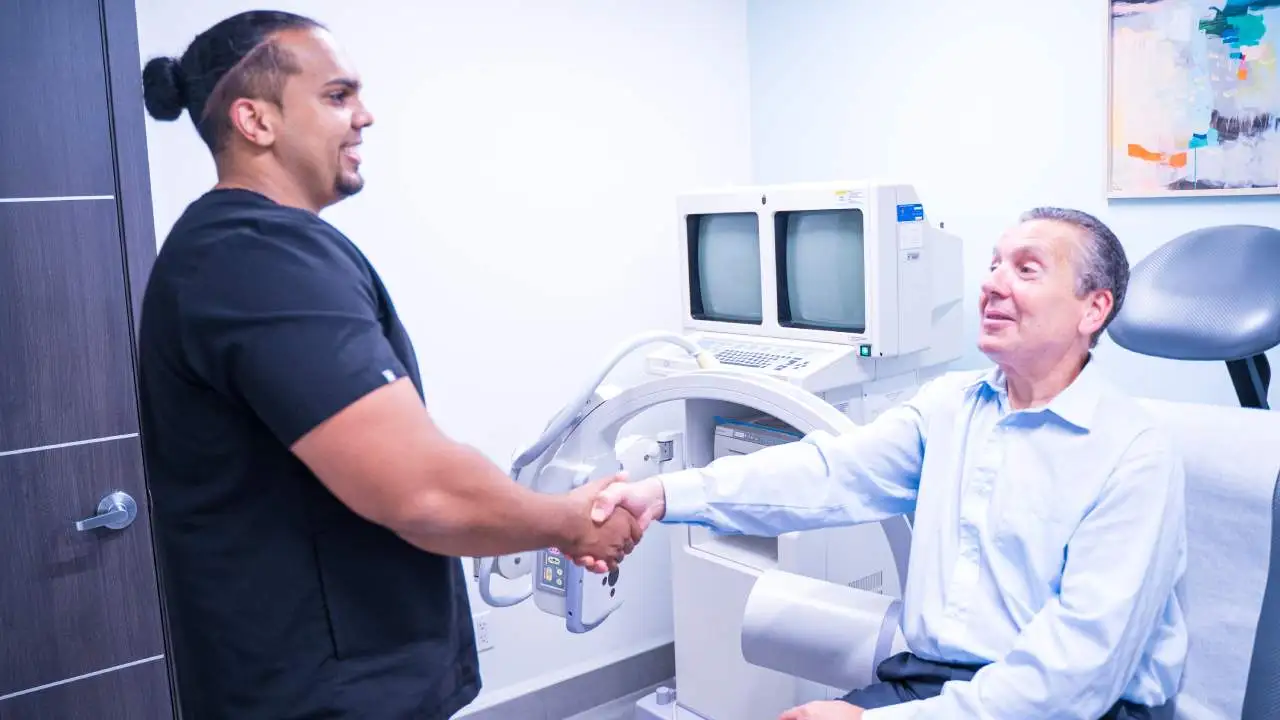Venous insufficiency is a condition in which the veins in the legs have difficulty returning blood to the heart, leading to blood pooling and damaging the veins. This condition can be caused by a number of factors, such as obesity, pregnancy, and age. Venous insufficiency can be a serious health problem if left untreated, leading to a higher risk of blood clots, skin changes, and even ulcerations.
At Vein Treatment Clinic, our board-certified vein doctors specialize in diagnosing and treating chronic venous insufficiency. We offer minimally invasive treatments, such as endovenous laser ablation, sclerotherapy, and ambulatory phlebectomy, to provide our patients with the best possible outcome. However, one of the most common questions we get asked is whether walking is good for venous insufficiency. In this article, we will explore the benefits of walking for venous insufficiency and how it can help improve blood flow in the legs.
Understanding Chronic Venous Insufficiency
Chronic venous insufficiency is a condition in which the veins in the legs cannot efficiently return blood to the heart. When the valves in the veins are damaged, they fail to keep blood flowing in the correct direction, leading to blood pooling in the lower legs. This condition can cause a range of symptoms, such as swelling, pain, and fatigue. If left untreated, chronic venous insufficiency can progress to venous stasis, a condition in which blood flow slows down even further, leading to skin changes, ulcerations, and infections.
The Importance of Early Venous Insufficiency Treatment
Early venous insufficiency treatment is crucial because the condition can worsen over time if left untreated. The veins in the legs have one-way valves that keep blood flowing in the correct direction, towards the heart. When these valves become damaged or weak, blood can flow backwards and pool in the veins, leading to chronic venous insufficiency. As a result, the veins become enlarged and twisted, causing pain, swelling, and discomfort.
If venous insufficiency is not treated early on, it can progress to more serious conditions, such as venous stasis, skin changes, and ulcerations. These complications can be debilitating and affect a person’s quality of life. Therefore, it is important to seek early venous insufficiency treatment from a specialist who can diagnose the root cause of the problem and provide a personalized treatment plan.
At Vein Treatment Clinic, we use vascular imaging and duplex ultrasound to diagnose the severity and underlying cause of venous insufficiency. With this information, we can create a personalized treatment plan to address the individual needs of our patients. Early venous insufficiency treatment can prevent further damage to the veins and improve a patient’s overall quality of life.
Is Walking Good for Venous Insufficiency?
Walking is a highly beneficial exercise for people with venous insufficiency. It helps improve blood flow in the legs by activating the calf muscles, which pump blood back up towards the heart. Walking also promotes the circulation of lymphatic fluid, reducing swelling and inflammation in the legs. Furthermore, walking helps prevent blood from pooling in the veins by increasing the flow rate of blood.
Walking is a low-impact exercise that can be easily incorporated into daily routines, making it accessible to people of all ages and fitness levels. However, it is important to start slowly and gradually increase the intensity and duration of walks to avoid overexertion and injury.
Leg Lifts
Leg lifts are another great exercise for people with venous insufficiency. This exercise involves lifting one leg at a time while standing or lying down. Leg lifts help improve blood flow in the legs, reduce swelling, and prevent blood from pooling. To perform this exercise, stand straight with your feet shoulder-width apart. Slowly lift one leg up, hold for a few seconds, and then lower it back down. Repeat on the other leg.
Avoid Prolonged Sitting or Standing
Sitting or standing for long periods of time can exacerbate venous insufficiency symptoms, such as swelling and pain. It is important to take frequent breaks and move around to improve blood flow in the legs. If you have a desk job, try to stand up and stretch every 30 minutes. If you have to sit for long periods of time, try to take frequent breaks to walk around and stretch your legs.
Compression Stockings
Compression stockings are a medical-grade garment that applies pressure to the legs, helping improve blood flow and prevent blood from pooling. Compression stockings come in a variety of sizes and compression levels, ranging from mild to very strong. They can be purchased over-the-counter or prescribed by a vein doctor. Compression stockings should be worn throughout the day and removed at night.
Stationary Bike
A stationary bike is another great exercise for people with venous insufficiency. It is a low-impact exercise that helps improve blood flow in the legs without putting too much pressure on the joints. A stationary bike can be used at home or at a gym. To get the most out of your workout, try cycling for at least 30 minutes a day, three to five times a week. When you ride a bike, your leg muscles push the accumulated blood toward the heart to restore optimal blood circulation.
Regular Exercise
Regular exercise is essential for people with venous insufficiency. It helps improve blood flow, reduce swelling, and prevent blood from pooling. It is important to choose exercises that are low-impact and gentle on the joints, such as walking, swimming, or yoga. Aim to exercise for at least 30 minutes a day, three to five times a week.
Benefits of Walking for Venous Insufficiency
Walking is an excellent exercise for people with venous insufficiency. It helps improve blood flow in the legs, reduce swelling, and prevent blood from pooling. Here are some of the benefits of walking for venous insufficiency:
- Improved Blood Flow: Walking helps increase blood flow in the legs, improving oxygen and nutrient delivery to the tissues.
- Reduced Swelling: Walking reduces swelling in the legs by promoting lymphatic drainage.
- Prevention of Blood Clots: Walking helps prevent blood clots by improving blood flow and preventing blood from pooling.
- Improved Muscle Tone: Walking helps improve muscle tone in the legs, making it easier for the muscles to pump blood back to the heart.
- Reduced Pain: Walking helps reduce pain and discomfort associated with venous insufficiency by improving blood flow and reducing swelling.
Please note that walking and other lifestyle changes can only alleviate some of the worst symptoms of chronic venous insufficiency. They can’t treat the underlying problem. The only way to treat venous insufficiency is through medical intervention and minimally invasive vein treatments, such as radiofrequency ablation and venaseal.
If you are experiencing symptoms of venous insufficiency, such as leg pain, swelling, or skin changes, it is important to seek professional help. Our board-certified vein doctors at Vein Treatment Clinic offer personalized, minimally invasive treatments to relieve your symptoms and improve your quality of life. We have state-of-the-art locations across the United States, including New York, New Jersey, Long Island, California, and Washington DC. Contact us today to schedule a consultation and take the first step towards healthier, pain-free legs.
Frequently asked questions
Can chronic venous insufficiency heal itself?
No, it doesn’t go away on its own. This condition means your leg veins aren’t working quite right, and over time, that can get worse. The good news is, we can treat it, safely and gently.
Can walking cure venous insufficiency?
Walking is great for your circulation, and it can definitely help your legs feel better. But it won’t fix the problem completely. Think of it like brushing your teeth: it’s part of the routine, but you still need the dentist when something’s wrong.
What are the best treatments for vein disorders?
We use simple, low-risk treatments that help close or shrink the veins that aren’t working well. These include:
- A small injection (sclerotherapy)
- A gentle heat treatment to close the vein (ablation)
- A special foam (Varithena) that targets larger veins
These are outpatient treatments, meaning you go home the same day.
Can chronic venous insufficiency affect your life expectancy?
Not directly, no. But if you ignore it, it can cause painful problems like swelling, wounds, or clots. That’s why it’s important to catch it early. With the right care, you can stay active and avoid complications.
Why is chronic venous insufficiency in the spotlight right now?
Chronic venous insufficiency has been getting more attention lately after reports about Trump’s vein condition. Some news sources shared that Donald Trump was diagnosed with CVI, a condition that can cause leg swelling and circulation problems. That coverage has helped raise awareness and made more people curious about their own symptoms. It’s a reminder that leg discomfort isn’t just part of getting older. It’s something worth checking out.



